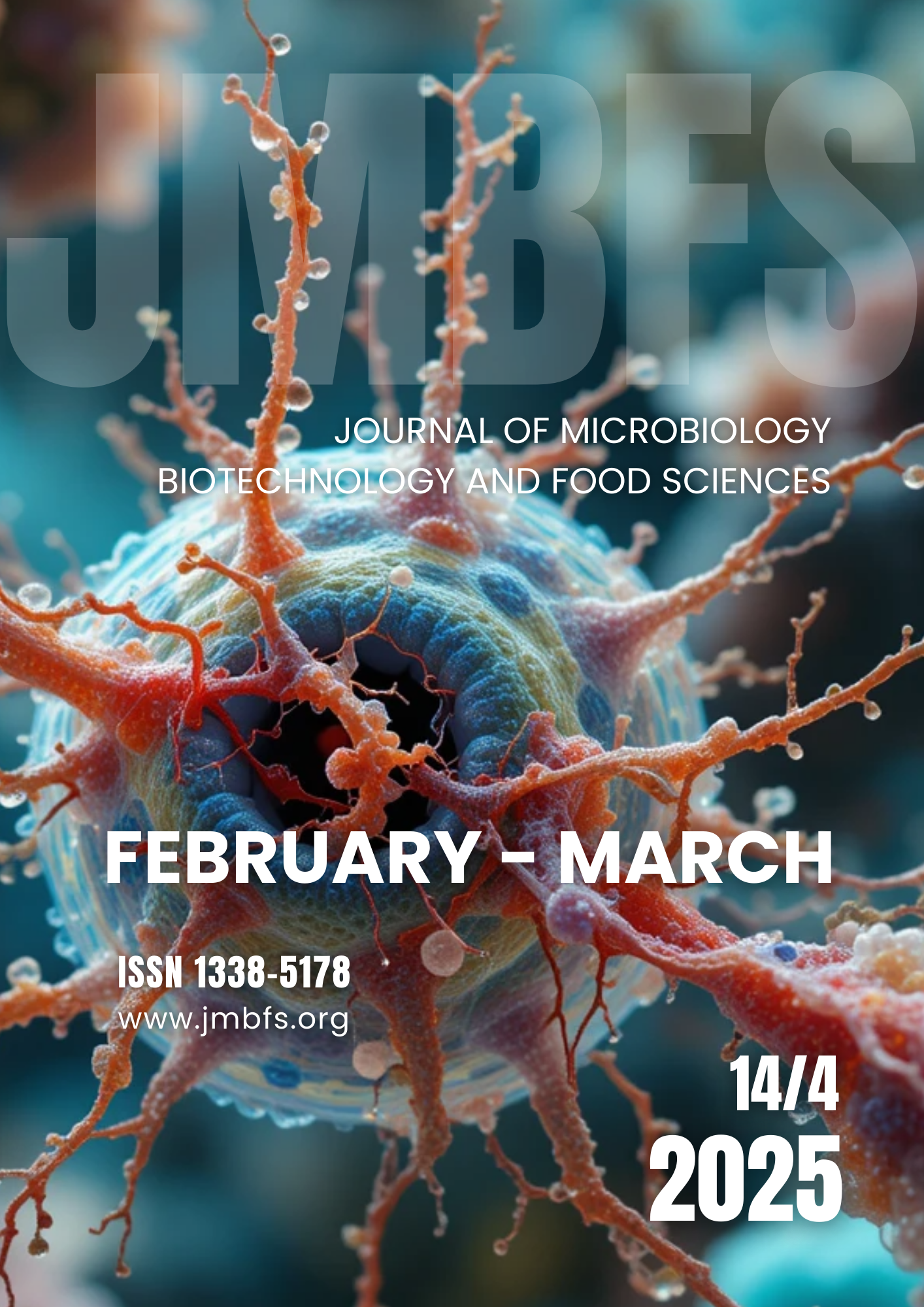PRODUCTION OF BIODEGRADABLE PLASTIC FILM FROM POTATO AND SAGO STARCH
DOI:
https://doi.org/10.55251/jmbfs.11143Keywords:
Biodegradability, Bioplastic Film, Potato Starch, Sago Starch, CharacterizationAbstract
The increasing focus on biodegradable plastic is attributed to their non-hazardous characteristics, distinguishing them from synthetic plastics. The present work focuses on the development of potato and sago starch-based bioplastic film with sorbitol and glycerol as plasticizer glycerol as plasticizers, along with the incorporation of acetic acid and sodium bicarbonate as an antimicrobial agent. In this study, a method was employed involving the mixing of 10 grams each of potato starch and sago starch with varying concentrations of plasticizers (10%, 20%, 30% sorbitol and 20%, 30%, 40% glycerol), along with 10%, 20%, 30% acetic acid and 5%, 10%, 15% sodium bicarbonate relative to the total starch amount. The mixture was then heated with stirring. The resulting products underwent characterization through Fourier Transform Infrared Spectroscopy (FTIR), chemical resistance testing, swelling testing, water solubility testing, solubility testing in chemical solvents, biodegradability testing, and mechanical analysis. The outcomes revealed that the highest tensile strength, reaching 5.81 MPa, was achieved with a combination of 6 mL acetic acid, 6g sorbitol, and 8 mL glycerol. FTIR spectroscopy confirmed the formation of starch bioplastics by identifying functional groups O–H, C–H, and C=O. Potato and sago starch-based bioplastics were found to degrade effectively when buried in soil. Overall, this study underscores the significant potential of the potato and sago starch mixture in bioplastic production, highlighting its favorable miscibility and compatibility.
Downloads
Downloads
Published
How to Cite
Issue
Section
License
Copyright (c) 2023 Dr. Abhishek Kumar Singh, Parul Sharma, Megha Shrivastav, Rakshita Chaudhary, Pranjal Chauhan, Sanskriti, Anushka Banerjee

This work is licensed under a Creative Commons Attribution 4.0 International License.
All papers published in the Journal of Microbiology, Biotechnology and Food Sciences are published under a CC-BY licence (CC-BY 4.0). Published materials can be shared (copy and redistribute the material in any medium or format) and adapted (remix, transform, and build upon the material for any purpose, even commercially) with specifying the author(s).





